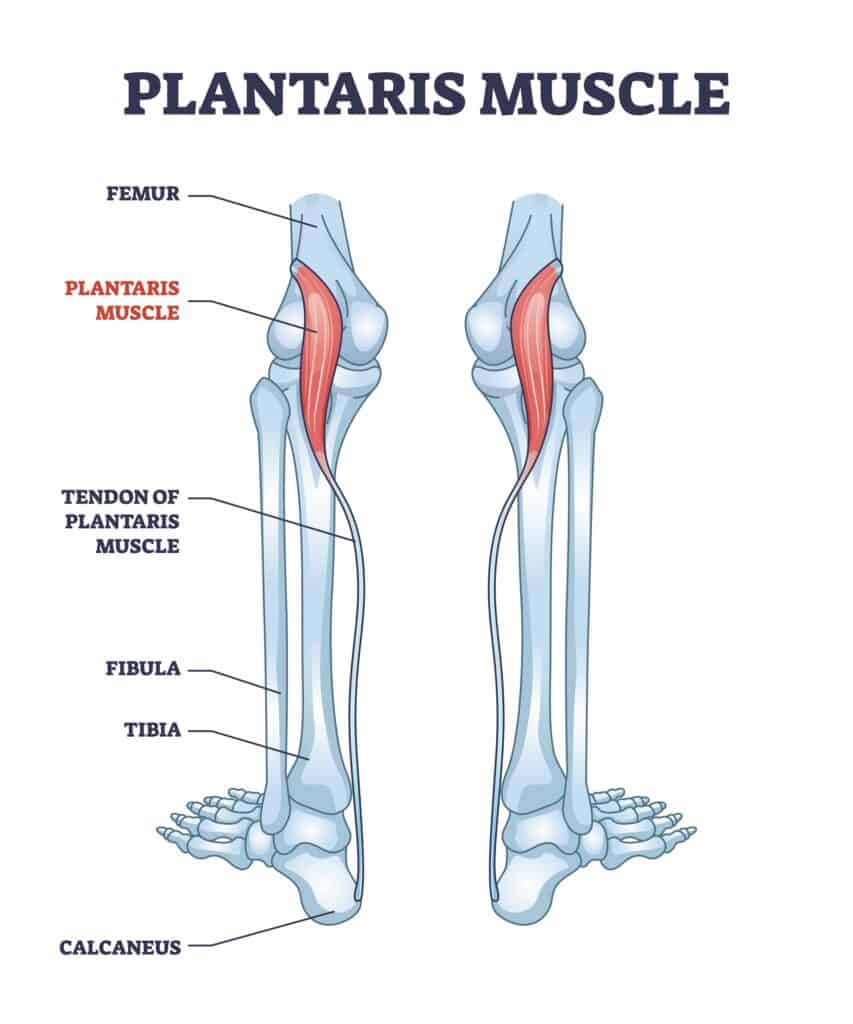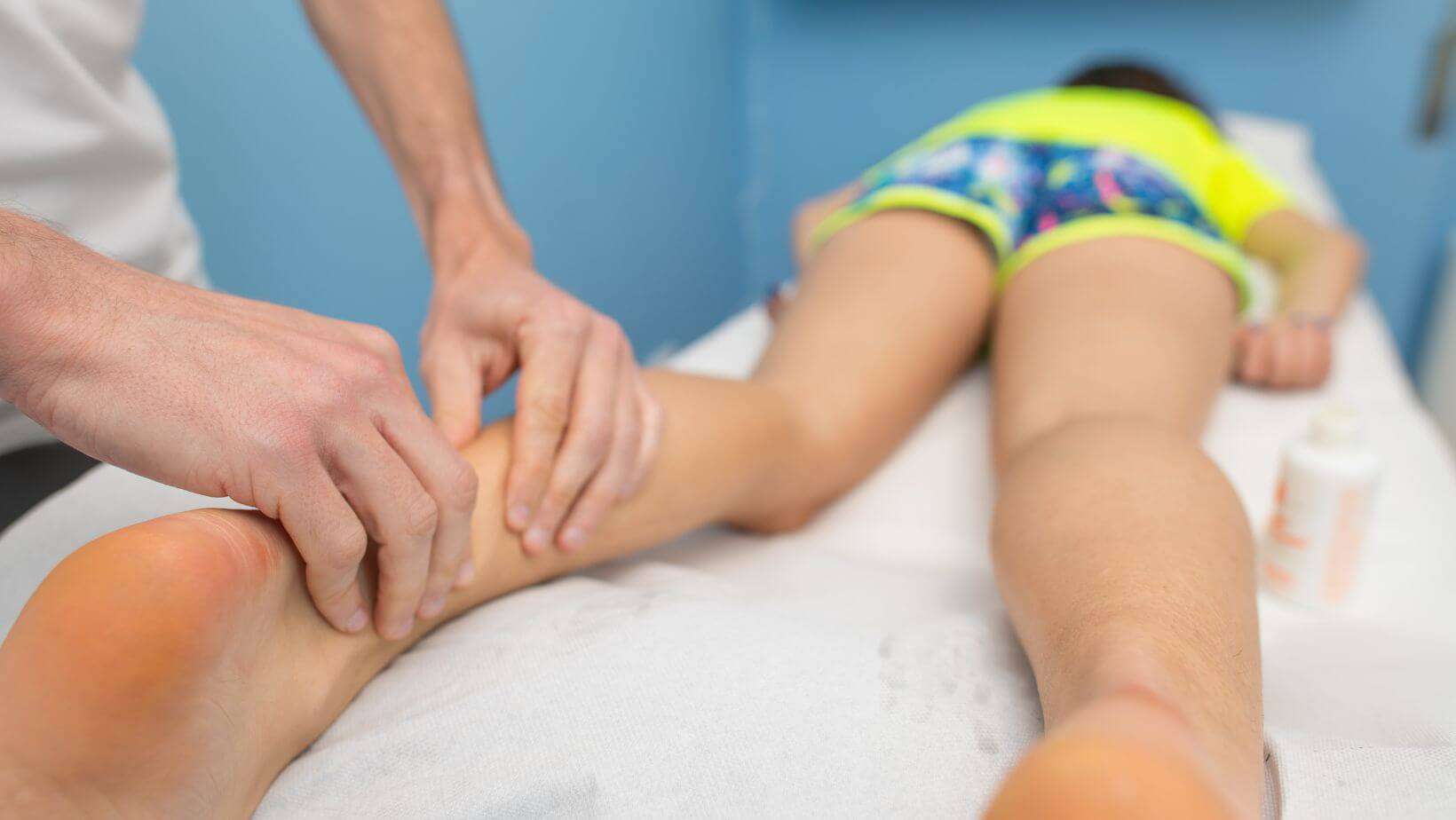Calf Muscle Pain
Read More >
The Plantaris Muscle is an often forgotten muscle that forms part of the Calf Muscle Group (Triceps Surae). The Plantaris is not present in 7-20% of the population; when present, it can be found on the inner aspect of the calf muscle, approximately 7-13cm in length, attaching to the Calcaneus, often separately to the Achilles Tendon insertion.
The long thin tendon is often incorrectly identified as a nerve by first-year medical students, and as a result, it is also known as the “Freshman’s nerve”. It is believed that the Plantaris does not have a particular function in assisting movements of the foot and ankle but appears to assist with proprioception primarily.

The Plantaris Muscle has become more well-known in the medical world due to its increasing relevance to certain types of Achilles Tendonitis. As the Plantaris muscle is located on the medial (inner) aspect of the Achilles Tendon, it is believed to play a significant role in recalcitrant Achilles Tendonitis patients who report that their pain is located on the medial aspect of their Achilles Tendon.
There are two suspected reasons for this:
1: The Plantaris Tendon has become tendinopathic, meaning that the Plantaris is affected in isolation, and it is not the Achilles Tendon causing a patient’s symptoms.
2: The Plantaris Tendon becomes inflamed and begins to rub off the Achilles Tendon through locomotion.
Tennis leg refers to a rupture of the medial head of the Gastrocnemius muscle. Still, it has been found that alongside this, the Plantaris muscle has ruptured or in a minute amount of causes (1.7%) the symptoms of tennis leg were an isolated Plantaris Rupture.

Depending on the type of injury there are two distinct locations of pain. For a Plantaris Muscle Rupture, symptoms are often a sudden pop in the inner aspect of the calf with immediate onset of swelling and pain. There may be some localised bruising and patients often confuse this for a DVT.
For a Plantaris Tendon issue, symptoms include pain on the medial aspect of the Achilles Tendon that is exacerbated when running or doing a single leg calf raise. There are often no visible signs of injury but pain on an Achilles Tendon squeeze test.
Clinically a Physical Therapist or Sports Medicine Doctor can create a clinical hypothesis of a Plantaris injury based on the patient’s symptoms and the location of the pain.
If the clinician would like to establish greater clarity over the injury, they may refer for a scan of the area. The most common scan to diagnose a Plantaris Tendon issue is an ultrasound scan, although an MRI may be requested for a more detailed picture.

Treatment for Plantaris Muscle Tears and Tendonitis is similar to managing Achilles Tendonitis under a physical therapist’s care. Using a heel raise can help to shorten the tendon and provide pain relief, as can taking anti-inflammatories.
Isometric calf strengthening in the acute stages, progressing to isotonic strengthening to the floor and below neutral. A hopping protocol to help return stuffiness to the tendon is beneficial.
Shockwave therapy or hyaluronic acid injections can be effective in stubborn cases that do not improve with conservative treatment.
This article is written by James McCormack, a Foot and Ankle Specialist who is an expert in treating Plantaris Tendon Pain.
This is not medical advice. We recommend a consultation with a medical professional such as James McCormack if you are experiencing any of the symptoms discussed in this article. James offers Online Physiotherapy Appointments weekly and face-to-face appointments in his London clinic.